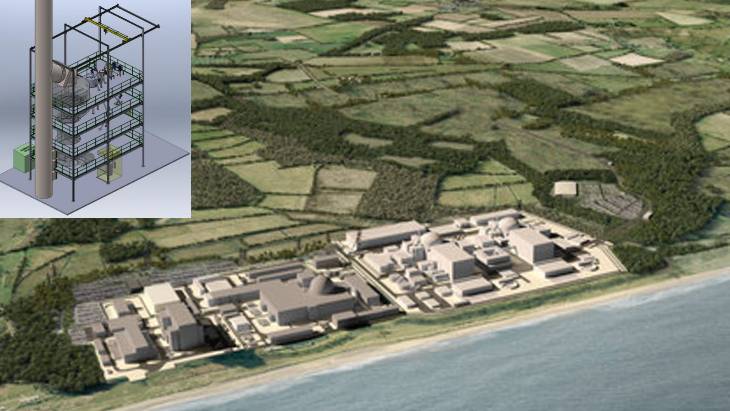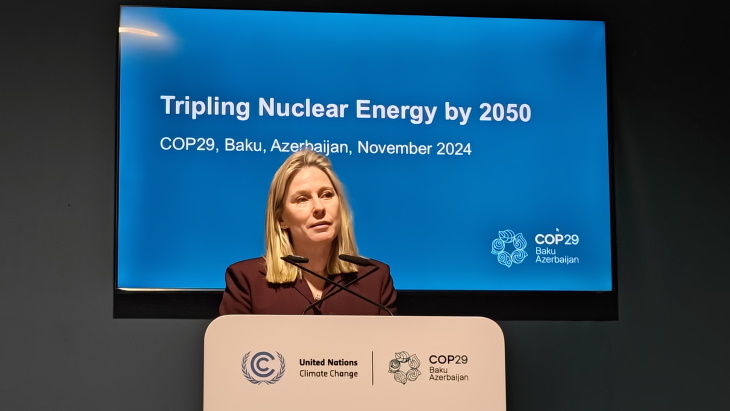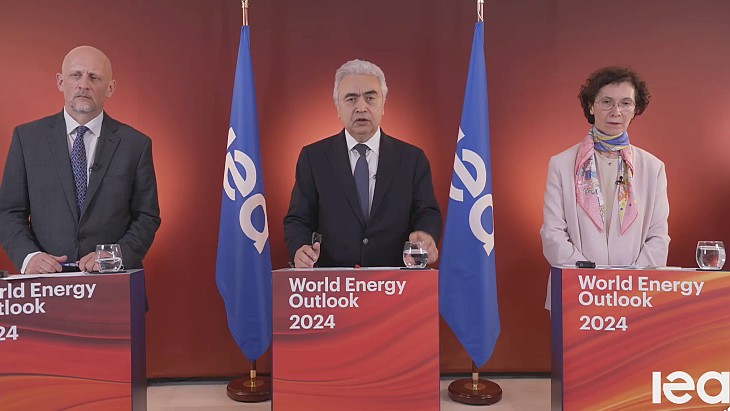'Megatonne' CO2 capture plant plan for Sizewell C

Those behind the project - EDF’s Sizewell C, University of Nottingham, Strata Technology, Atkins and Doosan Babcock - gave an upbeat assessment of progress made in phase 1 of the UK’s Department for Business, Energy and Industrial Strategy (BEIS) Greenhouse Gas Removal innovation competition.
They say that a heat-powered direct air capture technology can be developed and in the future scaled up and integrated with the Sizewell C power plant, offering increased efficiency and less reliance on electricity compared with existing direct air capture technology and "could utilise up to 400 megawatt therma of heat from the power plant to capture 1.5 million tonnes of CO2 per year, which is enough to almost offset the UK’s entire emissions from railway transport".
The idea is to utilise heat (steam) from the turbine installation at Sizewell C power station when it is operational, removing CO2 from the ambient air where the concentration is around 400ppm by placing large volumes of air in contact with chemicals known as sorbents using an adsorption system, where the CO2 adheres to the solid surface of the sorbent material. The sorbents are then treated so that the CO2 is released from them and compressed for storage or reuse, while the adsorbent materials can also be re-used.
The consortium is among the bidders for phase 2 funding from the BEIS contest, and says "the experiments performed using a lab-based pilot plant have enabled the process design" for a 100 tonnes of CO2 per year demonstration plant to be completed.
Their proposal is to build the demonstration plant, at an estimated cost of GBP3.0 million (USD3.7 million), on a plot about 12 metres by 20 metres at, or around, the Sizewell C site, saying: "The key advantage of siting the demonstration plant in or around the wider Sizewell C estate is that the environmental conditions that the adsorber column is exposed to will be representative of the potential commercial scale plant for integration with Sizewell C, subject to any necessary permissions and other consents being secured at the appropriate time."
During the phase 1 trial the team discovered that a crosswind increased the efficiency of the system, but says that one area of study with the demonstration plant would be any impact of sea salt in the air, at the coastal location.
"Once significant data has been generated from the demonstration plant, giving further confidence in the technology’s commercial potential," the next stage of the plan is to progressively scale up to capturing 50,000 tonnes CO2/year by 2030 and "we are exploring opportunities to make use of heat sources from other nuclear plants in the UK".
It will then further scale up to the plant linked to Sizewell C "capable of capturing CO2 on a Megatonne scale", although it adds that "an alternative nuclear (or other) plant needs to be identified with a heat source that could drive the process, as Sizewell C would not be in place by this time, but of course Sizewell C will be capable of driving carbon capture solutions at a megatonne scale when operational in the 2030s".
The consortium's report also notes that the high-cost currently associated with direct air capture has been a "major barrier to the development of a significant UK market" but says the use of "future low-cost, low-carbon heat available from a nuclear power plant" means it could achieve the goal of removing CO2 at a megatonne scale at a cost of less than GBP200 per tonne of CO2 removed.
For that commercial-scale plant, Sizewell C is proposing to extract up to 400 MWt of heat from the nuclear power plant once operational. A "minor modification to the power plant design will be required to implement cogeneration", but Sizewell C "does not expect any significant change to the replication of the design from Hinkley Point C or its safety case at this stage".
The plan is for Sizewell C to feature two EPRs producing 3.2 GW of electricity, enough to power the equivalent of around six million homes. It would be a "replica" of Hinkley Point C plant, under construction in Somerset. EDF submitted a development consent order (a planning application) for the plant in May 2020 and if all goes well, has said it expects to make a final investment decision later this year or in 2023.

_99697.jpg)








_50521.jpg)

